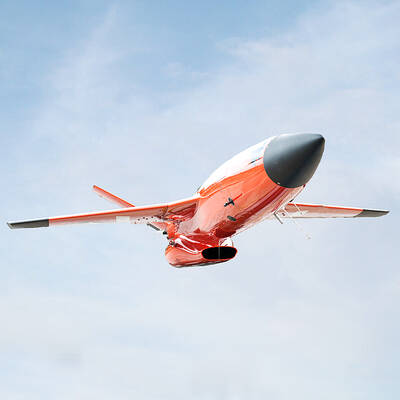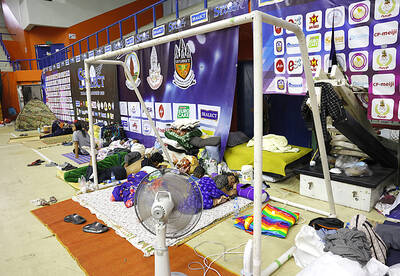The Guam Visitors Bureau is to decouple its Taiwan business from China, by establishing a Taiwan marketing committee, with its budget for targeting Taiwanese tourists expected to double, Representative to Guam Felix Yen (嚴樹芬) said yesterday.
Previously, the bureau grouped Taiwan, China and Hong Kong together under its “greater China” marketing committee, but a new committee is to manage business with Taiwan independently.
The committee’s establishment is aimed at deepening bilateral relations in tourism, including medical tourism, as well as economic, cultural, educational and cultural exchanges, Yen said.

Photo: Chung Lee-hua, Taipei Times
For Guam, China and Hong Kong are unstable tourist sources, and it also imposes stricter visa requirements for their tourists, he added.
With the new committee, the bureau is expected to pay more attention and resources to tourism with Taiwan, and its budget for mutual assistance projects would double, he said.
In Guam, the number of Taiwanese tourists ranks No. 3 after Japanese and South Koreans, yet the average spending of Taiwanese, about US$300 per capita, is 15 percent higher than the other two groups, he said.
Prior to the COVID-19 pandemic, there were four direct flights between Taiwan and Guam weekly, and Taiwanese could stay up to 45 days under a visa-waiver program, he said.
Asked if the office would strive to make Guam part of Taiwan’s first partners to promote “travel bubbles,” Yen said the territory has started vaccinating its citizens, and if other countries or regions start to build travel bubbles with Taiwan, Guam would likely follow suit.
The office would work harder to promote Guam’s tourism resources in coming exhibitions, hoping to attract more Taiwanese to visit the territory when the pandemic eases, Yen said.
The Taipei Economic and Cultural Office in Guam was reopened in July last year after its operation was suspended in 2017 due to budgetary and personnel assignment issues.

‘WIN-WIN’: The Philippines, and central and eastern European countries are important potential drone cooperation partners, Minister of Foreign Affairs Lin Chia-lung said Minister of Foreign Affairs Lin Chia-lung (林佳龍) in an interview published yesterday confirmed that there are joint ventures between Taiwan and Poland in the drone industry. Lin made the remark in an exclusive interview with the Chinese-language Liberty Times (the Taipei Times’ sister paper). The government-backed Taiwan Excellence Drone International Business Opportunities Alliance and the Polish Chamber of Unmanned Systems on Wednesday last week signed a memorandum of understanding in Poland to develop a “non-China” supply chain for drones and work together on key technologies. Asked if Taiwan prioritized Poland among central and eastern European countries in drone collaboration, Lin

The Chien Feng IV (勁蜂, Mighty Hornet) loitering munition is on track to enter flight tests next month in connection with potential adoption by Taiwanese and US armed forces, a government source said yesterday. The kamikaze drone, which boasts a range of 1,000km, debuted at the Taipei Aerospace and Defense Technology Exhibition in September, the official said on condition of anonymity. The Chungshan Institute of Science and Technology and US-based Kratos Defense jointly developed the platform by leveraging the engine and airframe of the latter’s MQM-178 Firejet target drone, they said. The uncrewed aerial vehicle is designed to utilize an artificial intelligence computer

Renewed border fighting between Thailand and Cambodia showed no signs of abating yesterday, leaving hundreds of thousands of displaced people in both countries living in strained conditions as more flooded into temporary shelters. Reporters on the Thai side of the border heard sounds of outgoing, indirect fire yesterday. About 400,000 people have been evacuated from affected areas in Thailand and about 700 schools closed while fighting was ongoing in four border provinces, said Thai Rear Admiral Surasant Kongsiri, a spokesman for the military. Cambodia evacuated more than 127,000 villagers and closed hundreds of schools, the Thai Ministry of Defense said. Thailand’s military announced that

CABINET APPROVAL: People seeking assisted reproduction must be assessed to determine whether they would be adequate parents, the planned changes say Proposed amendments to the Assisted Reproduction Act (人工生殖法) advanced yesterday by the Executive Yuan would grant married lesbian couples and single women access to legal assisted reproductive services. The proposed revisions are “based on the fundamental principle of respecting women’s reproductive autonomy,” Cabinet spokesperson Michelle Lee (李慧芝) quoted Vice Premier Cheng Li-chiun (鄭麗君), who presided over a Cabinet meeting earlier yesterday, as saying at the briefing. The draft amendment would be submitted to the legislature for review. The Ministry of Health and Welfare, which proposed the amendments, said that experts on children’s rights, gender equality, law and medicine attended cross-disciplinary meetings, adding that